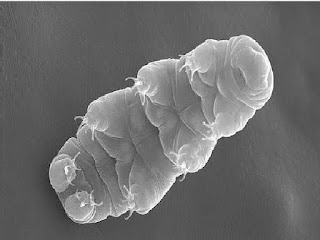Well what happened in 2015? Some odd claims were made. In October KIC 8462852, a star doing strange things was observed. Some said that it was created by intelligent life. Actually it is a comet swarm.
The barbecue charcoal theory was taken a step further with suggestions that processed meat such as bacon causes cancer. However, the risk is statistically insignificant. Just don't eat too much of it.
NASA's mysterious EM Drive was announced which apparently is a microwave "powered" warp drive. Roll on Star trek. Thrust was produced from nothing but at a such a low level as to be unusable.
We do not have to worry about global warming because the sun will take care of it. The Maunder Minimum phase will push us into an ice age in the 2030s. Have no fear. Such a drastic 5º C fall will not happen. We have done far too much damage for the Maunder Minimum to have any effect.
The little Tardigrade creature picks up genes from the environment by horizontal transfer. That is why its DNA is a combination of virus, bacteria, fungi, plant and animal. This was the assertion anyway. Another research team ended the speculation when it found that only 36 genes were acquired by gene transfer, not the massive 6,000 plus in the earlier paper.
The world is a wonderful place, particularly when scientists get things wrong. We will still have to wait for the discovery of little green men. And what we do in our daily lives will always be suspect: saying that "the usual" is bad for us is easy to do and can cause short term panic.
◆ Science by Ty Buchanan ◆
●
. . . . . . . . . . . . . . . . . . . . . . . . . . . . . . . . . .
MYSTERIES OF 2015
#space #kic #science #astronomy #theory #paper #mystery
what happened in the year 2015 mysterious odd peculiar weird claims observations scientists papers articles news politics economics society anthropology historiography history sociology people nations country asia europe africa u.s. south america central Mediterranean eastern western interesting funny technology free news
MYSTERIES OF 2015
#space #kic #science #astronomy #theory #paper #mystery
what happened in the year 2015 mysterious odd peculiar weird claims observations scientists papers articles news politics economics society anthropology historiography history sociology people nations country asia europe africa u.s. south america central Mediterranean eastern western interesting funny technology free news








